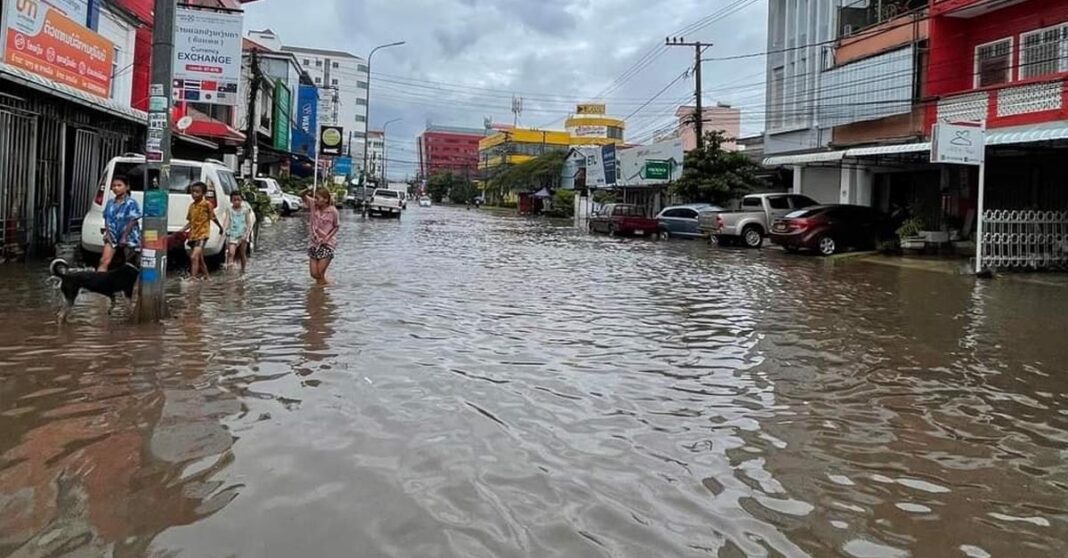In response to the persistent flooding in Vientiane Capital during the yearly rainy season, local authorities have begun to implement comprehensive measures to mitigate the damages.
The Lao capital often experiences flooding due to a combination of factors such as rapid city expansion, unregulated construction, improper soil filling, and changing weather patterns.
Bounyavath Nilaxay, head of the Vientiane Public Works and Transport Department, addressed these issues and outlined plans to mitigate flooding at the 7th ordinary meeting of the Vientiane People’s Council held from 8 to 12 July.
The Vientiane Water Department plans to maintain and regularly clean both main and backup canals, remove debris from roadside waterholes, and strengthen drainage infrastructure.
The government will also launch public awareness campaigns that will encourage residents to participate in regular maintenance and avoid improper waste disposal. With comprehensive planning and community involvement.
Furthermore, the city has collaborated with international agencies and companies for research and assistance, notably Japan International Cooperation Agency and Korea International Cooperation Agency. Nevertheless, Bounyavath emphasized that local efforts are still necessary, including cleaning roadside ditches and main drainage canals in several districts.
To ensure success, the Ministry of Public Works and Transport has proposed 15 new drainage cleaning projects for 2025, with a total cost of LAK 44.46 billion (USD 1.9 billion). These projects include drainage improvements in several districts in the capital, including Saysettha, Sikhottabong, Chanthabouly, Hatsaiyfong, Sisattanak, and Sangthong.
According to the official, Vientiane Capital uses 52 canals and 13 swamps and ponds for drainage. The city’s flat land, with a slope of only 2 percent, makes it hard for water to drain quickly during heavy rains. Over the years, development has filled in natural areas like creeks and ponds, which used to help manage rainwater. Additionally, climate change has led to increased rainfall each year.
There are two primary types of flooding in Vientiane: overflowing floods and urban floods. Overflowing floods occurred notably in 1966 and 2008, with water levels reaching 170.75 meters and 171.71 meters, respectively.
Meanwhile, urban flooding results from outdated infrastructure, with six main roads in the city suffering from blocked and shallow drainage systems. Many natural canals have not been systematically improved, and some have been closed off by residents. Issues such as inconsistent drainage pipe sizes and unconnected water pipes further exacerbate the problem.



